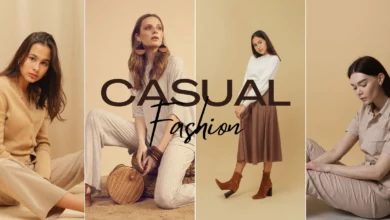Evolution of Highland Attire: The Great Kilt

The Great Kilt is one of Scotland’s most iconic and recognizable symbols of Scottish heritage and culture. The Great Kilt, in particular, is a remarkable piece of clothing that has been around for centuries. It is an iconic garment that evokes a sense of pride, tradition, and history. Also known as the belted plaid or the breacan-an-fheilidh, the Great Kilt has been an integral part of Scottish culture.
But what is the Great Kilt, and what makes it so special? So, the question is that What makes the Great Kilt so special is its versatility and functionality. The kilt can be worn in a variety of ways, depending on the occasion and the weather. It can be worn as a full-length garment, or the plaid can be folded and worn as a shorter, more practical skirt. The kilt can also be used as a cloak, a blanket, or even a makeshift tent in a pinch. In addition to its practicality, the Great Kilt is also steeped in tradition and history. It has been worn by Scottish clansmen for centuries and is often associated with the Highlanders and their rebellions against English rule.
Today, the kilt is still worn for formal occasions, such as weddings and ceremonies, as well as for Scottish games and other cultural events. Overall, the Great Kilt is a unique and iconic garment that embodies the rich history and cultural heritage of Scotland. So, whether you are a Scot or simply fascinated by Scottish culture, join us as we demystify the Great Kilt and uncover the secrets behind this iconic piece of clothing. Because, This comprehensive guide will provide readers with a step-by-step guide on how to wear the Great Kilt, where to buy it, how to measure for it, and tips on maintaining it.
Putting on a Great Kilt: Step-by-Step Guide
Putting on a Great Kilt can seem daunting at first, but with a little practice, it can become second nature. Here’s a step-by-step guide on how to put on a Great Kilt:
Step 1: Prepare the kilt
Lay the kilt out flat and make sure that the pleats are facing down. The Great Kilt typically measures six to eight yards in length, so it’s important to ensure that it’s spread out evenly.
Step 2: Wrap the kilt around the body
Stand in the center of the kilt with the bottom edge of the kilt touching the floor. Take the top edge of the kilt and bring it up to your waist. Wrap the kilt around your waist once, so that the pleats are facing outwards.
Step 3: Secure the kilt with a belt
Take a belt or a leather strap and wrap it around your waist over the kilt, securing it in place. Make sure that the belt or strap is snug, but not too tight, as you need to be able to breathe comfortably.
Step 4: Adjust and style the kilt
Fold the top of the kilt down to form a waistband, and then adjust the pleats as needed. Make sure that the pleats are even and well-defined, as this is one of the hallmarks of the Great Kilt.
The Highland Great Kilt: Features &Variations
The Highland Great Kilt is one of the most popular variations of the Great Kilt. Here are some of its key features and variations:
Differentiate the Highland Great Kilt & other Scottish kilts
The Highland Great Kilt is a unique type of Scottish kilt that sets itself apart from other kilts due to its construction from a single piece of cloth. Unlike other Scottish kilts that typically consist of a separate kilt and kilt jacket, the Great Kilt is a complete garment in itself. Generally, the Great Kilt is crafted from wool, although it is possible to use other materials like cotton or linen. The Great Kilt’s single-piece construction makes it an exceptional garment with its own set of characteristics, such as its length and versatility. It typically
measures around four to six yards in length, which provides ample material to wrap around the body, creating measures around four to six yards in length, which provides ample material to wrap around the body, creating a pleated skirt-like garment. The kilt’s size also allows it to be used as a cloak or blanket in colder weather. Furthermore, the Great Kilt’s construction involves a complex and intricate pleating technique that is unique to this type of kilt. This technique
involves folding and pleating the fabric to create a series of vertical and horizontal pleats that run around the waist, resulting in a distinctive and aesthetically pleasing appearance. In conclusion, the Highland Great Kilt is a remarkable garment that distinguishes itself from other Scottish kilts through its single-piece construction, unique pleating technique, and versatile nature. Its use of wool or other materials makes it a practical and comfortable garment for a range of occasions and weather conditions.
Materials used in making a Highland Great Kilt
Traditionally, Highland Great Kilts were made from woolen tartan fabric, which was woven by hand. Today, most Great Kilts are made from machine-woven tartan fabric, which is more affordable and widely available.
Popular tartan patterns for Highland Great Kilts
There are countless tartan patterns available for Highland Great Kilts, each with its own unique history and significance. Some of the most popular tartan patterns include the Black Watch tartan, the Royal Stewart tartan, and the MacLeod tartan.
Accessories & complementary garments for Highland Great Kilts
To complete the Highland Great Kilt outfit, there are several accessories and complementary garments that can be worn, such as the scottish sporran (a small pouch worn around the waist), the sgian-dubh (a small knife worn in the sock), and the ghillie brogues (traditional Scottish shoes).
Great Kilts for Sale: Where to Buy & What to Look For!
If you’re looking to buy a Great Kilt, there are several options available:
Physical & online stores that offer Great Kilts
Many physical stores in Scotland and other countries offer Great Kilts for sale, as well as online stores that specialize in Scottish apparel. When looking for a Great Kilt, it’s important to keep the following factors in mind:
- Material quality: Look for kilts made from high-quality wool or other durable materials that can withstand wear and tear.
- Weave quality: Check the weave of the tartan to ensure that it’s even and well-defined.
- Tartan pattern: Choose a tartan pattern that’s meaningful to you or represents your Scottish heritage.
- Price: Great Kilts can vary in price, so shop around to find one that fits your budget.
Great Kilt Dimensions: How to Measure for the Perfect Fit
When measuring for a Great Kilt, it’s important to take multiple measurements to ensure a well-fitted garment. In addition to measuring around your waist, consider measuring your hip size as well. This can help ensure a comfortable fit and prevent the kilt from slipping down. Additionally, measuring the desired length of the kilt can ensure the kilt falls at the desired height on the leg. Stand straight with relaxed abdominal muscles when taking measurements to ensure accuracy.
Step 1: Measure your waist
When measuring for a kilt, it’s important to use a measuring tape and measure around the waist where the kilt will sit. This will help ensure an accurate fit and comfortable wear of the garment. It’s best to take the measurement while standing straight with relaxed abdominal muscles, as this will provide the most accurate measurement. Once you have your waist measurement in inches, you can use this to select the appropriate size of the kilt.
Step 2: Measure your hips
Measure the widest part of your hips, taking note of the measurement in inches.
Step 3: Measure the length
Decide on the length of the kilt you want and measure from your waist down to that point. For example, if you want a six-yard kilt, measure from your waist down to six yards below.
Step 4: Calculate the pleat depth
To calculate the pleat depth, divide your waist measurement by the number of pleats you want. For example, if you want 9 pleats, divide your waist measurement by 9 to determine the pleat depth.
The Great Kilt – History & Significance
The Great Kilt has a rich history and cultural significance in Scotland. Here are some key points about the Great Kilt’s history and significance:
Origins of the Great Kilt
The Great Kilt, a type of Scottish kilt, is widely believed to have its origins in the Scottish Highlands during the 16th century. Its construction from a single piece of cloth distinguishes it from other Scottish kilts, and it was originally worn by Highlanders as a versatile garment. Primarily, the Great Kilt was worn as a means of keeping warm in the challenging and often unpredictable climate of the Scottish Highlands. Its length and material provided ample coverage and insulation, making it a practical garment for harsh outdoor conditions. Over time, the Great Kilt became a symbol of Scottish identity and heritage, evolving from a practical garment into a cultural icon.
The symbolic meaning of the Great Kilt
The Great Kilt, a unique type of Scottish kilt, has become synonymous with Scottish identity and national pride. Its historical and cultural significance has made it a revered symbol of Scottish heritage, and it is often worn during Scottish events and ceremonies to pay homage to tradition and celebrate the country’s rich cultural history. As a symbol of Scottish identity, the Great Kilt has been embraced by Scots around the world. It represents not only the country’s cultural heritage but also the resilience, strength, and bravery of the Scottish people. The kilt has a long and storied history, dating back to the 16th century, and has been worn by generations of Highlanders.
The Great Kilt’s popularity has even extended beyond Scottish borders, with enthusiasts and aficionados around the world embracing the garment and incorporating it into their own cultural traditions.
As such, the kilt has become a cherished and iconic aspect of Scottish heritage, beloved by Scots and enthusiasts alike.
Read here more about this website.




